Former White House communications director reveals what really happened inside the Situation Room on 9/11
White House insiders have revealed a chilling new detail of just what happened inside the Situation Room on September 11.
Writing in his book 'The Situation Room', former Clinton aid turned ABC anchor George Stephanopoulos revealed what it was like inside the White House on 9/11.
According to Stephanopoulos, Frank Miller, the senior director for defense policy, urged everyone to leave the room but nobody did.
Taking a different approach, Miller then had everyone right down their name and social security number because 'we want to know what bodies to look for'.
Early on in the terror attacks that killed almost 3,000, it was feared a hijacked plane may also have been heading for the White House. United 93 was crashed into a Pennsylvania field by a heroic passenger revolt before it could reach its intended target of the White House of US Capitol.
Stephanopoulos said that everyone inside, around 20 people, complied with Miller's request.
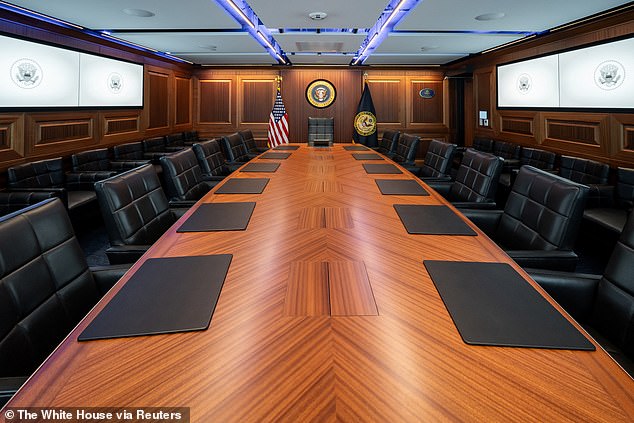
Frank Miller, the senior director for defense policy, had everyone right down their name and social security number because 'we want to know what bodies to look for'
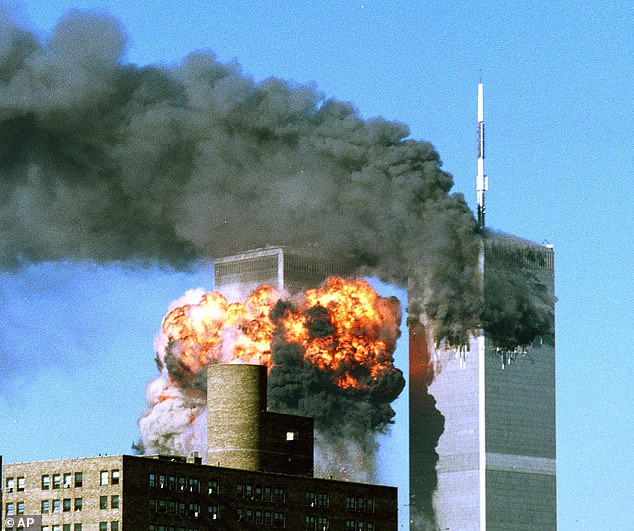
Smoke billows from the top of One World Trade Center and flames and debris explode from Two World Trade Center, Tuesday, Sept. 11, 2001
Stephanopoulos also recalls how in 2008 the White House withdrew plans to have President Obama moved from the building during disruptive refurbishments to the building because they feared it would look racist.
One White House aide stamped out the idea, saying: 'We are not moving the first Black president of the United States out of the Oval Office. It ain't happening.'
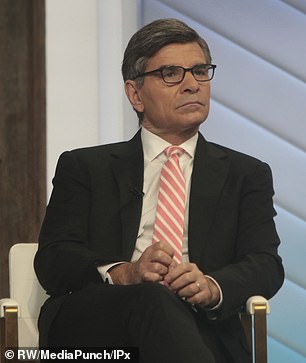
Writing in his book 'The Situation Room', former Clinton aid turned ABC anchor George Stephanopoulos revealed what it was like inside the White House on 9/11
The Situation Room, situated in the West Wing basement, was renovated as part of a $50 million makeover last year.
Construction workers dug five feet below the secure 5,500-square-foot complex to install cutting-edge wiring and upgrade the facility JFK wanted after the 1961 Bay of Pigs Invasion.
The maze of offices, conference rooms and computer banks has new screens, LED lights, clocks and high-tech communications infrastructure to monitor threats.
While see-through glass offices can fade to opaque with just the press of a button in true.
The modern finish replaces the old floors and furniture worn down over more than 50 years while history unfolded.
Donald Trump monitored the 2019 operation that killed Islamic State leader Abu Bakr al-Baghdadi from inside the room.
While Barack Obama stared intently as he watched the heart-stopping moment a Navy SEAL raid on 9/11 mastermind Osama Bin Laden ended with his assassination.
President Biden watched in February 2022 when Abu Ibrahim al-Hashimi al-Qurayshi blew himself and his family up inside a Syrian hideout during a raid by U.S. forces.
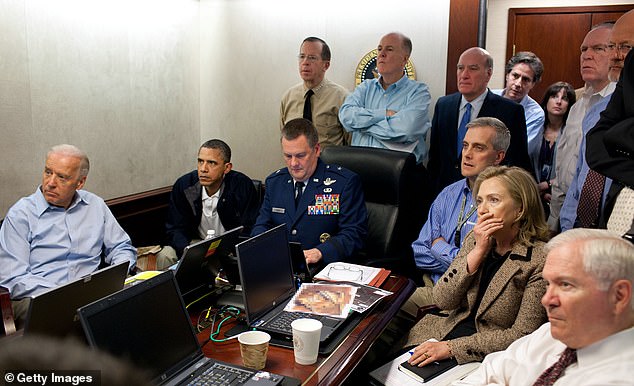
Obama stared intently as he watched the heart-stopping moment a Navy SEAL raid on 9/11 mastermind Osama Bin Laden ended with his assassination in 2011
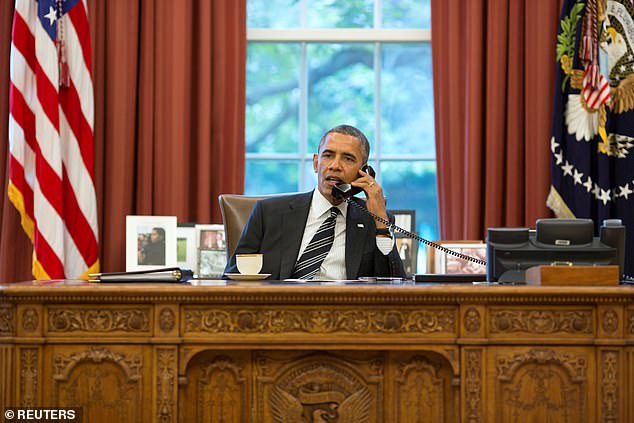
According to Stephanopoulos, President Obama was not asked to vacate the White House while it was being refurbished because staff thought asking the first black president to vacate would look racist
Access is tightly controlled and generally restricted to the president's national security and military advisers.
Anyone listening in on classified briefings needs clearance. Even the contractors working on the renovation last year had to get temporary security clearances.
The complex was created in 1961 by the Kennedy administration after the Bay of Pigs invasion.
President John F. Kennedy believed there should be a dedicated crisis management center where officials could coordinate intelligence faster and better.
Nixon administration official Henry Kissinger described the space as 'uncomfortable, unaesthetic and essentially oppressive.'
After 9/11, the White House did a significant update, along with a broader upgrade to presidential communications on Air Force One and the presidential helicopter.
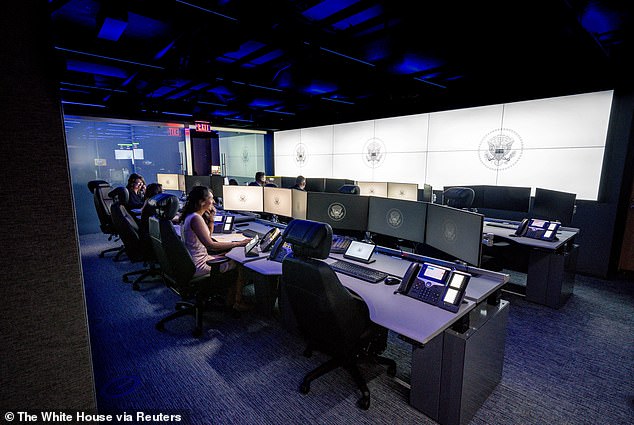
The complex was created in 1961 by the Kennedy administration after the Bay of Pigs invasion. Staff are seen here in the newly renovated complex
The complex is staffed around the clock by military and civilian personnel who monitor breaking developments worldwide.
It has a reception area with a U.S. seal in stonework. Behind that is the main conference room, the 'JFK room.'
To the right are a smaller conference room and two soundproof 'breakout rooms.' To the left is the 'watch floor,' a 24-7 operations center.
The JFK room has a long wooden table with six leather chairs on each side and one at the head for the president. Leather armchairs line the walls.
A giant, high-tech screen runs the length of the back wall. A 2-foot (0.6-meter) seal is positioned at the president's end of the room, larger than the old seal.











































































































































































































































































































































